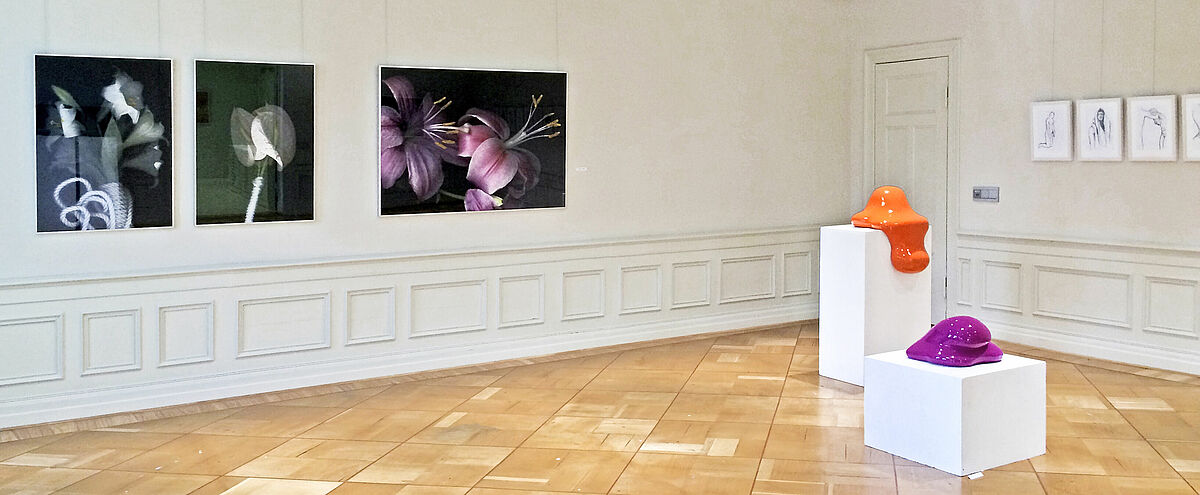Teacher-Training Degree Course - Art and Design at Regionale Schule (secondary school up to year 10)
The Art and Design subject is characterised by the integrative combination of artistic, scientific and art education content and experience. The degree course focuses on artistic practice, which forms the field of reference for all other areas.
The fundamental part of degree studies serves as an introduction to the theory and practice of fine art, the history of art and architecture, aesthetics and subject didactics. Basic course content from these fields of study is taught in the form of lectures, seminars, exercises and projects, with workshop practicals [de] and excursions playing a major role.
During their studies, students acquire knowledge of the functions and effects of art, architecture and visual media and learn the basics of the teaching of art.
Students gain productive and reproductive experience in art and design practice in areas such as painting, drawing, sculpture, printmaking, photography, film, video, design, building of objects, installation and performance. Project events and study-related elective offers from various fields of study serve to help students set their own areas of specialisation. The application-oriented degree course is supplemented by school-type-related subject didactics and periods of teaching practice at schools.
Teacher Training Degree Course - Art and Design at Gymnasium (secondary schools up to year 12)
The Art and Design subject is characterised by the integrative combination of artistic, scientific and art education content and experience. The degree course focuses on artistic practice, which forms the field of reference for all other areas.
The fundamental part of the degree studies serves as an introduction to the theory and practice of fine art, the history of art and architecture, aesthetics and subject didactics. Basic course content from these fields of study is taught in the form of lectures, seminars, exercises and projects, with workshop practicals [de] and excursions playing a major role.
During their studies, students acquire knowledge of the functions and effects of art, architecture and visual media and learn the basics of the teaching of art.
Students gain productive and reproductive experience in art and design practice in areas such as painting, drawing, sculpture, printmaking, photography, film, video, design, building of objects, installation and performance. Project events and study-related elective offers from various fields of study serve to help students set their own areas of specialisation. The application-oriented degree course is supplemented by school-type-related subject didactics and periods of teaching practice in schools.
Master of Arts Fine Arts
The Fine Arts master's degree course focuses on the fine arts and provides graduates with the requirements for working as a freelance artist.
The degree course can be completed in the following fields:
- Graphics (drawing, printmaking, books)
- Painting/sculpture (interdisciplinary projects, installation, art in context)
- New media (photography, video, digital AV media, installation, performance)
In project-bound contexts and in individual studio work, students expand their existing repertoire of artistic methods through interdisciplinary and contextual approaches. The course should enable students to develop independent artistic forms of expression and to integrate art and history of art, as well as philosophical knowledge. The acquisition of presentation and documentation skills complements the knowledge required for making a living as a freelance artist.
The master's degree course in Fine Arts has a standard length of studies of four semesters.
The application deadline [de] is 1 June each year.

